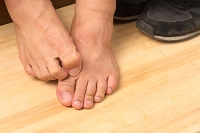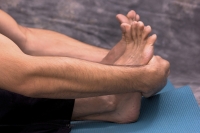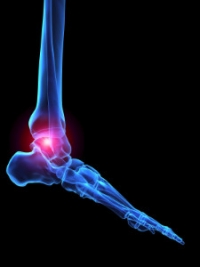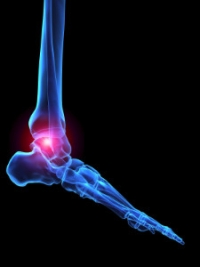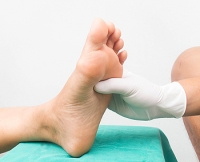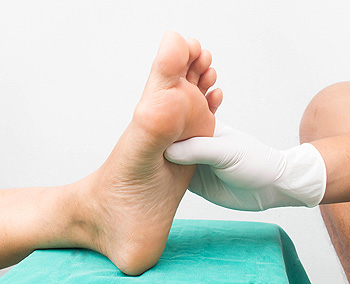
Blog (791)
What Is This Rash on My Feet?
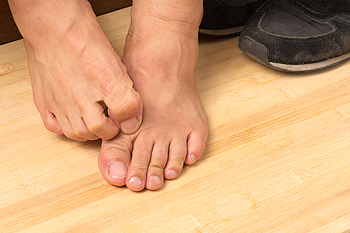 A rash on the feet can be indicative of a variety of medical conditions. One of the most common reasons for a foot rash is a fungal infection called athlete’s foot. The rash characteristic of athlete’s foot is usually scaly, flakey, itchy, and red, and it may also sting or burn. Irritant contact dermatitis is an allergic skin reaction that can affect the feet. A contact dermatitis rash features dry, cracked, scaly - but not itchy - skin in a localized area. Allergic contact dermatitis is caused by a more severe allergic reaction and often presents as small, pink or red skin bumps, spots, or blisters that are very itchy. Other conditions that can lead to a foot rash include hand foot and mouth disease, eczema, psoriasis, scabies, an insect bite, and medical conditions like chicken pox, shingles, and Lyme disease. If you have a rash on your feet, please consult with a podiatrist.
A rash on the feet can be indicative of a variety of medical conditions. One of the most common reasons for a foot rash is a fungal infection called athlete’s foot. The rash characteristic of athlete’s foot is usually scaly, flakey, itchy, and red, and it may also sting or burn. Irritant contact dermatitis is an allergic skin reaction that can affect the feet. A contact dermatitis rash features dry, cracked, scaly - but not itchy - skin in a localized area. Allergic contact dermatitis is caused by a more severe allergic reaction and often presents as small, pink or red skin bumps, spots, or blisters that are very itchy. Other conditions that can lead to a foot rash include hand foot and mouth disease, eczema, psoriasis, scabies, an insect bite, and medical conditions like chicken pox, shingles, and Lyme disease. If you have a rash on your feet, please consult with a podiatrist.
Athlete’s Foot
Athlete’s foot is often an uncomfortable condition to experience. Thankfully, podiatrists specialize in treating athlete’s foot and offer the best treatment options. If you have any questions about athlete’s foot, consult with Dr. Kenneth Donovan from Advanced Care Foot and Ankle. Our doctor will assess your condition and provide you with quality treatment.
What Is Athlete’s Foot?
Tinea pedis, more commonly known as athlete’s foot, is a non-serious and common fungal infection of the foot. Athlete’s foot is contagious and can be contracted by touching someone who has it or infected surfaces. The most common places contaminated by it are public showers, locker rooms, and swimming pools. Once contracted, it grows on feet that are left inside moist, dark, and warm shoes and socks.
Prevention
The most effective ways to prevent athlete’s foot include:
- Thoroughly washing and drying feet
- Avoid going barefoot in locker rooms and public showers
- Using shower shoes in public showers
- Wearing socks that allow the feet to breathe
- Changing socks and shoes frequently if you sweat a lot
Symptoms
Athlete’s foot initially occurs as a rash between the toes. However, if left undiagnosed, it can spread to the sides and bottom of the feet, toenails, and if touched by hand, the hands themselves. Symptoms include:
- Redness
- Burning
- Itching
- Scaly and peeling skin
Diagnosis and Treatment
Diagnosis is quick and easy. Skin samples will be taken and either viewed under a microscope or sent to a lab for testing. Sometimes, a podiatrist can diagnose it based on simply looking at it. Once confirmed, treatment options include oral and topical antifungal medications.
If you have any questions, please feel free to contact one of our offices located in Warren, Livingston, and Toms River, NJ . We offer the newest diagnostic and treatment technologies for all your foot care needs.
Plantar Warts Can Be Treated!
Plantar Warts Can Be Treated!
A Toe Stretch for Plantar Fasciitis
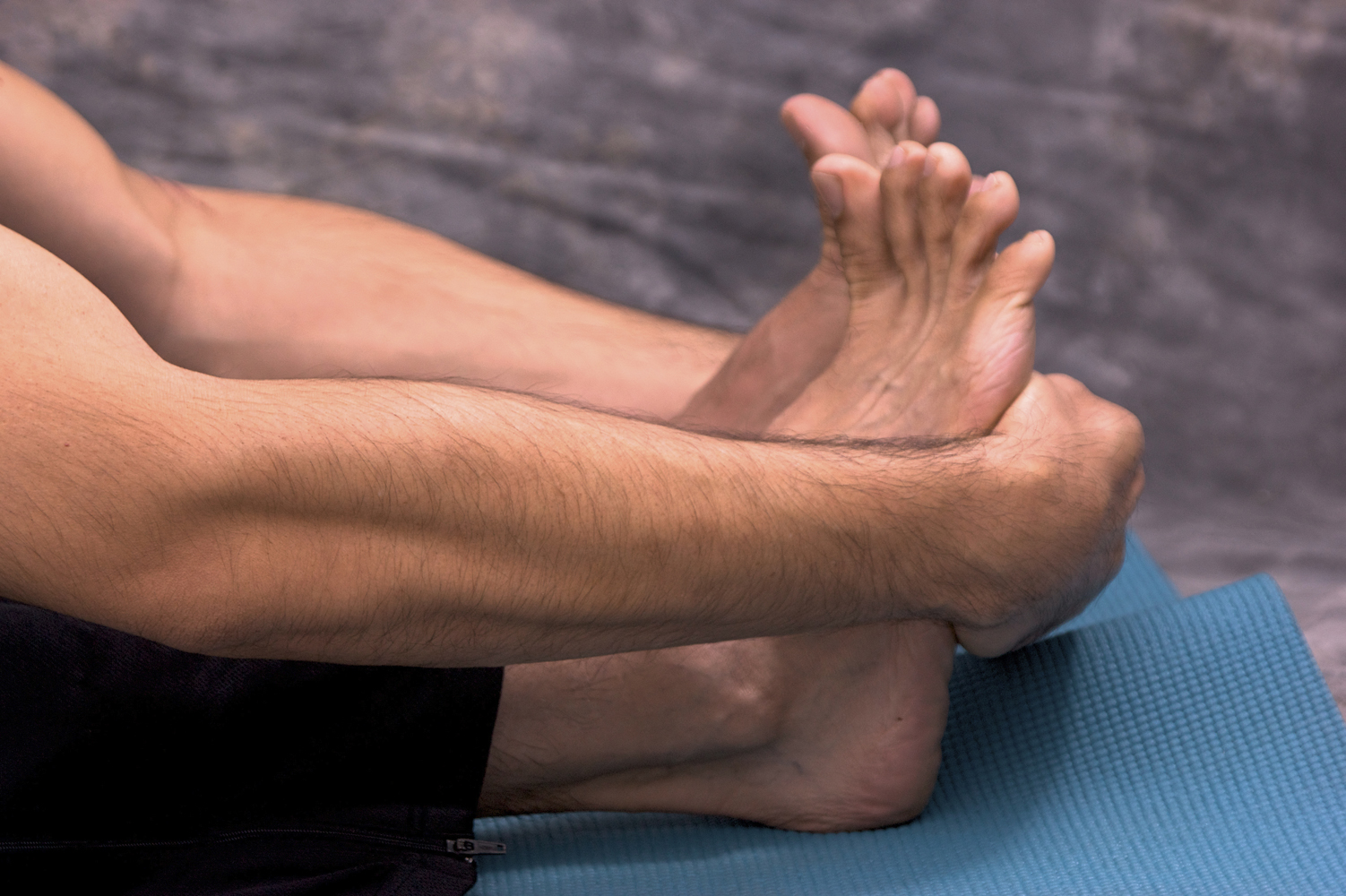 The plantar fascia is a ligament that runs along the bottom of the foot, and can be at risk of injury. When it is inflamed, usually due to repetitive overuse from playing sports or working out, plantar fasciitis may develop. Symptoms of this condition can include heel pain, arch pain, and possible swelling and tenderness along the bottom of the foot. There are many foot exercises that you can try to help relieve pain. Stretching is one way to help yourself recover from plantar fasciitis. One such exercise is the toe stretch. To do this exercise, sit on the floor with your knee bent and foot flat on the floor. Pull the toes back until you feel a stretch in the arch of your foot. Hold for 30 seconds, and then relax. Repeat 10 times. For more information about plantar fasciitis and foot stretches, please consult with a podiatrist.
The plantar fascia is a ligament that runs along the bottom of the foot, and can be at risk of injury. When it is inflamed, usually due to repetitive overuse from playing sports or working out, plantar fasciitis may develop. Symptoms of this condition can include heel pain, arch pain, and possible swelling and tenderness along the bottom of the foot. There are many foot exercises that you can try to help relieve pain. Stretching is one way to help yourself recover from plantar fasciitis. One such exercise is the toe stretch. To do this exercise, sit on the floor with your knee bent and foot flat on the floor. Pull the toes back until you feel a stretch in the arch of your foot. Hold for 30 seconds, and then relax. Repeat 10 times. For more information about plantar fasciitis and foot stretches, please consult with a podiatrist.
Stretching the feet is a great way to prevent injuries. If you have any concerns with your feet consult with Dr. Kenneth Donovan from Advanced Care Foot and Ankle. Our doctor will assess your condition and provide you with quality foot and ankle treatment.
Stretching the Feet
Stretching the muscles in the foot is an important part in any physical activity. Feet that are tight can lead to less flexibility and make you more prone to injury. One of the most common forms of foot pain, plantar fasciitis, can be stretched out to help ease the pain. Stretching can not only ease pain from plantar fasciitis but also prevent it as well. However, it is important to see a podiatrist first if stretching is right for you. Podiatrists can also recommend other ways to stretch your feet. Once you know whether stretching is right for you, here are some excellent stretches you can do.
- Using a foam roller or any cylindrical object (a water bottle or soda can will do), roll the object under your foot back and forth. You should also exert pressure on the object. Be sure to do this to both feet for a minute. Do this exercise three times each.
- Similar to the previous one, take a ball, such as a tennis ball, and roll it under your foot while seated and exert pressure on it.
- Grab a resistance band or towel and take a seat. If you are using a towel, fold it length wise. Next put either one between the ball of your foot and heel and pull with both hands on each side towards you. Hold this for 15 seconds and then switch feet. Do this three times for each foot.
- Finally hold your big toe while crossing one leg over the other. Pull the toe towards you and hold for 15 seconds. Once again do this three times per foot.
It is best to go easy when first stretching your foot and work your way up. If your foot starts hurting, stop exercising and ice and rest the foot. It is advised to then see a podiatrist for help.
If you have any questions, please feel free to contact one of our offices located in Warren, Livingston, and Toms River, NJ . We offer the newest diagnostic and treatment technologies for all your foot care needs.
What Causes Ankle Arthritis?
Ankle arthritis is caused by damage to the cartilage, which covers the ends of the bones that make up the ankle joint. Cartilage provides a smooth, cushioned surface for the bones to move along, and when it deteriorates, symptoms like joint pain and stiffness follow. There are several processes that can damage or deteriorate the cartilage in the ankle joint. Major ankle injuries, such as ankle fractures, can greatly increase the risk of developing ankle arthritis. More minor, but repetitive trauma to the joint from sprains or chronic instability can have a similar effect. Improper foot biomechanics from flat feet, high arches, and other deformities, can make the cartilage wear away over time. Rheumatoid arthritis, which is an autoimmune condition, can damage the cartilage through inflammation of the lining of the joint. Gout, pseudogout, and infectious arthritis can also damage the cartilage. If you are suffering from joint stiffness, pain, or reduced mobility in your ankles, please seek the care of a podiatrist.
Arthritis can be a difficult condition to live with. If you are seeking treatment, contact Dr. Kenneth Donovan from Advanced Care Foot and Ankle. Our doctor can provide the care you need to keep you pain-free and on your feet.
Arthritic Foot Care
Arthritis is a term that is commonly used to describe joint pain.
The condition itself can occur to anyone of any age, race, or gender, and there are over 100 types of it.
Nevertheless, arthritis is more commonly found in women compared to men, and it is also more prevalent in those who are overweight. The causes of arthritis vary depending on which type of arthritis you have. Osteoarthritis for example, is often caused by injury, while rheumatoid arthritis is caused by a misdirected immune system.
Symptoms
- Swelling
- Pain
- Stiffness
- Decreased Range of Motion
Arthritic symptoms range in severity, and they may come and go. Some symptoms stay the same for several years but could potentially get worse with time. Severe cases of arthritis can prevent its sufferers from performing daily activities and make walking difficult.
Risk Factors
- Occupation – Occupations requiring repetitive knee movements have been linked to osteoarthritis
- Obesity – Excess weight can contribute to osteoarthritis development
- Infection – Microbial agents can infect the joints and trigger arthritis
- Joint Injuries – Damage to joints may lead to osteoarthritis
- Age – Risk increases with age
- Gender –Most types are more common in women
- Genetics – Arthritis can be hereditary
If you suspect your arthritis is affecting your feet, it is crucial that you see a podiatrist immediately. Your doctor will be able to address your specific case and help you decide which treatment method is best for you.
If you have any questions, please feel free to contact one of our offices located in Warren, Livingston, and Toms River, NJ . We offer the newest diagnostic and treatment technologies for all your foot care needs.
What Causes Ankle Arthritis?
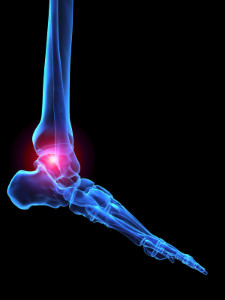 Ankle arthritis is caused by damage to the cartilage, which covers the ends of the bones that make up the ankle joint. Cartilage provides a smooth, cushioned surface for the bones to move along, and when it deteriorates, symptoms like joint pain and stiffness follow. There are several processes that can damage or deteriorate the cartilage in the ankle joint. Major ankle injuries, such as ankle fractures, can greatly increase the risk of developing ankle arthritis. More minor, but repetitive trauma to the joint from sprains or chronic instability can have a similar effect. Improper foot biomechanics from flat feet, high arches, and other deformities, can make the cartilage wear away over time. Rheumatoid arthritis, which is an autoimmune condition, can damage the cartilage through inflammation of the lining of the joint. Gout, pseudogout, and infectious arthritis can also damage the cartilage. If you are suffering from joint stiffness, pain, or reduced mobility in your ankles, please seek the care of a podiatrist.
Ankle arthritis is caused by damage to the cartilage, which covers the ends of the bones that make up the ankle joint. Cartilage provides a smooth, cushioned surface for the bones to move along, and when it deteriorates, symptoms like joint pain and stiffness follow. There are several processes that can damage or deteriorate the cartilage in the ankle joint. Major ankle injuries, such as ankle fractures, can greatly increase the risk of developing ankle arthritis. More minor, but repetitive trauma to the joint from sprains or chronic instability can have a similar effect. Improper foot biomechanics from flat feet, high arches, and other deformities, can make the cartilage wear away over time. Rheumatoid arthritis, which is an autoimmune condition, can damage the cartilage through inflammation of the lining of the joint. Gout, pseudogout, and infectious arthritis can also damage the cartilage. If you are suffering from joint stiffness, pain, or reduced mobility in your ankles, please seek the care of a podiatrist.
Arthritis can be a difficult condition to live with. If you are seeking treatment, contact Dr. Kenneth Donovan from Advanced Care Foot and Ankle. Our doctor can provide the care you need to keep you pain-free and on your feet.
Arthritic Foot Care
Arthritis is a term that is commonly used to describe joint pain. The condition itself can occur to anyone of any age, race, or gender, and there are over 100 types of it. Nevertheless, arthritis is more commonly found in women compared to men, and it is also more prevalent in those who are overweight. The causes of arthritis vary depending on which type of arthritis you have. Osteoarthritis for example, is often caused by injury, while rheumatoid arthritis is caused by a misdirected immune system.
Symptoms
- Swelling
- Pain
- Stiffness
- Decreased Range of Motion
Arthritic symptoms range in severity, and they may come and go. Some symptoms stay the same for several years but could potentially get worse with time. Severe cases of arthritis can prevent its sufferers from performing daily activities and make walking difficult.
Risk Factors
- Occupation – Occupations requiring repetitive knee movements have been linked to osteoarthritis
- Obesity – Excess weight can contribute to osteoarthritis development
- Infection – Microbial agents can infect the joints and trigger arthritis
- Joint Injuries – Damage to joints may lead to osteoarthritis
- Age – Risk increases with age
- Gender –Most types are more common in women
- Genetics – Arthritis can be hereditary
If you suspect your arthritis is affecting your feet, it is crucial that you see a podiatrist immediately. Your doctor will be able to address your specific case and help you decide which treatment method is best for you.
If you have any questions, please feel free to contact one of our offices located in Warren, Livingston, and Toms River, NJ . We offer the newest diagnostic and treatment technologies for all your foot care needs.
Peripheral Neuropathy and Daily Foot Checks
Peripheral neuropathy is a condition characterized by nerve damage in the feet and ankles. When associated with diabetes it is also known as diabetic neuropathy. This condition can lead to numbness or a loss of sensation in the feet and ankles. If you are unable to feel what is happening to your feet and ankles, you are less likely to detect potential foot problems when they occur. When even seemingly minor foot traumas occur like cuts and scrapes, and they are left undetected and untreated, they can progressively worsen over time and become wounds and ulcers. This is especially true for diabetics, whose wounds tend to heal slowly and poorly. To combat foot wounds and ulcers as well as the potential complications that they can bring, it is important for people with peripheral neuropathy to inspect their feet daily for any abnormalities or changes. If you notice a new cut, scrape, sore, wound, discoloration, or strange sensation, it is strongly suggested that you seek the care of a podiatrist as soon as possible.
Neuropathy
Neuropathy can be a potentially serious condition, especially if it is left undiagnosed. If you have any concerns that you may be experiencing nerve loss in your feet, consult with Dr. Kenneth Donovan from Advanced Care Foot and Ankle. Our doctor will assess your condition and provide you with quality foot and ankle treatment for neuropathy.
What Is Neuropathy?
Neuropathy is a condition that leads to damage to the nerves in the body. Peripheral neuropathy, or neuropathy that affects your peripheral nervous system, usually occurs in the feet. Neuropathy can be triggered by a number of different causes. Such causes include diabetes, infections, cancers, disorders, and toxic substances.
Symptoms of Neuropathy Include:
- Numbness
- Sensation loss
- Prickling and tingling sensations
- Throbbing, freezing, burning pains
- Muscle weakness
Those with diabetes are at serious risk due to being unable to feel an ulcer on their feet. Diabetics usually also suffer from poor blood circulation. This can lead to the wound not healing, infections occurring, and the limb may have to be amputated.
Treatment
To treat neuropathy in the foot, podiatrists will first diagnose the cause of the neuropathy. Figuring out the underlying cause of the neuropathy will allow the podiatrist to prescribe the best treatment, whether it be caused by diabetes, toxic substance exposure, infection, etc. If the nerve has not died, then it’s possible that sensation may be able to return to the foot.
Pain medication may be issued for pain. Electrical nerve stimulation can be used to stimulate nerves. If the neuropathy is caused from pressure on the nerves, then surgery may be necessary.
If you have any questions, please feel free to contact one of our offices located in Warren, Livingston, and Toms River, NJ . We offer the newest diagnostic and treatment technologies for all your foot care needs.
